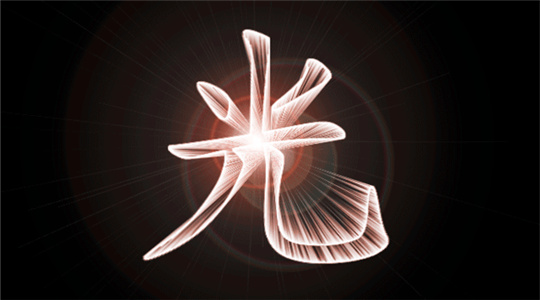
当前课程知识点:3ds Max: A Quick Start from Zero to One > Chapter 2: 3D Modeling > 2.2 Three Useful Modeling Methods > 2.2
返回《3ds Max: A Quick Start from Zero to One》慕课在线视频课程列表
返回《3ds Max: A Quick Start from Zero to One》慕课在线视频列表
三种超实用的建模方法
3dsMax中
想要的模型
不是随随便便
就可以拉出来的
哪怕是一张桌子
一把椅子
或是一个外星人
都需要用
3dsMax中的基本体
加工而成
要知道
电脑可没有智能到
装下你想要的所有模型
那么模型应该如何加工呢
一
三维建模方法
多种方法帮你搞定模型
3dsMax中
加工模型的方法有很多
例如
布尔建模
放样建模
样条线建模
NURBS建模
多边形建模
等等
每种建模方法都有其优势
或许你会问
既然有那么多建模方法
是不是每种都要学呢
其实对于初学者来说掌握
布尔建模
多边形建模
和样条线建模
这三种建模方法
就可以胜任大部分工作了
第一种方法
布尔建模
模型的加减法
布尔建模法是三种建模中
最为简单粗暴的建模方法
其原理是运用
两个模型的轮廓结构相交叉
通过运算
生成一种新的模型结构
不仅可用于
创建结构简单的物体
也可以创建一些结构特殊的
镂空或凹凸的物体
还可以用于制作动画
比如建筑生长动画等等
第二种方法
样条线建模
平面变立体的快捷方法
样条线建模法
则是通过二维图形生成
三维模型的一种建模方法
实际使用中
可以拓展出三种技能
第一项技能
使用样条线的线条特性
生成模型
例如
弯曲的水管
电线
钢丝架等
第二项技能
可以结合修改器
运用样条线的轮廓结构
通过车削成型
或挤出成型等方法
生成模型
比如说
啤酒瓶
灯罩
普通垃圾桶等类型的模型
可以采用
车削成型的方法制作
具有厚度的文字
不锈钢叉子
这些类型的模型呢
可以采用
挤出成型的方法制作
第三项技能
可以将第三方的软件数据
转换为样条线进行建模
例如
可以在AutoCAD
或Illustrator软件中
设计好图案
将路径导入3dsMax中
转换为样条线
结合修改器
就可以生成模型了
第三种建模方法
多边形建模
直观的控制
点
线
面
多边形建模
是3dsMax中
最强大的建模工具
具有一百多项
模型编辑功能
它的原理很简单
就是通过对点、线、面
进行编辑和调节
来达到塑型的目的
因此与其他方法相比
具有很直观的控制性
可以说
大部分模型
都可以运用
多边形建模法来实现
或许你会问
既然多边形建模那么强大
干嘛还要学
布尔建模和样条线建模呢
其实这些方法
并没有优劣好坏之分
多边形建模
虽然可以做很多事
但也有不擅长的领域
例如做一根弯曲的线
一点点的编辑
可不是简单的活
最快捷的方式啊
就是样条线建模
所以三种方法相互结合
互补不足
创建模型时才会更轻松
好了
今天为大家介绍了
三种超实用的建模原理
让你对建模有一个基本概念
未来的课程中
我们会逐一学习
它们的使用技巧
内容很充实
可千万不要错过噢
-Fast Understand of 3ds Max,Starting Your Virtual Journey
--Preface
-Preface
-1.1 How to get 3ds Max
--1.1 02
-1.1
-1.2 Introduction to the Interface of 3ds Max
--1.2 01
--3ds Max
-1.2
-1.3.1 Project Preparation 1: Set Up Project Folder
--1.3.1
-1.3.1
-1.3.2 Project Preparation 2:Initialization Settings
--1.3.2
-1.3.2
-1.4.1 Opening and Saving Files
--1.4.1
-1.4.1
-1.4.2 Basics Operation
--1.4.2
-1.4.2
-1.4.3 Advanced Operation
--1.4.3
-1.4.3
-1.5 General Hotkeys
--1.5
-1.5
-1.6 Creating Geometric Primitives
--1.6
-1.6
-2.1 3D Modeling Overview
--2.1
-2.1
-2.2 Three Useful Modeling Methods
--2.2
-2.2
-2.3 Boolean Modeling
--2.3
-2.3
-2.4.1 Spline Modeling 1:Spline Modeling Overview
--2.4.1
-2.4.1
-2.4.2 Spline Modeling 2: Modeling From a Spline
--2.4.2
-2.4.2
-2.4.3 Spline Modeling 3:How to Edit Spline Objects
--2.4.3
-2.4.3
-2.5.1 Polygon Modeling 1:Polygon Modeling Method
--2.5.1
-2.5.1
-2.5.2 Component Selection Techniques
--2.5.2
-2.5.2
-2.5.3 Polygon Modeling 3: 16 Polygon Modeling Commands
--2.5.3
-2.5.3
-2.5.4 Polygon Modeling 4: Subdivision Modeling
--2.5.4
-2.5.4
-2.5.5 Polygon Modeling 5: Attaching and Detaching
--2.5.5
-2.5.5
-2.6.1 Advanced Modeling Skills 1:“Stereoscopic” Modeling Method
--2.6.1 01
-2.6.1
-2.6.2 Advanced Modeling Skills 2:Box Modeling Method
--2.6.2
-2.6.2
-2.6.3 Advanced Modeling Skills 3:Deconstruction Modeling Method
--2.6.3
-2.6.3
-2.6.4 Advanced Modeling Skills 4:Problems to be Considered in Modeling
--2.6.4
-2.6.4
-3.1 Rendering
--3.1 02
-3.1
-3.2.1 Render Your First Work
--3.2.1 02
-3.2.1
-3.2.2 Arnold Render Set Up
--3.2.2 01
-3.2.2
-3.2.3 Introduction to the Arnold Renderer
--3.2.3
-3.2.3
-3.2.4 Arnold Renderer 1: Sampling
--3.2.4 02
-3.2.4
-3.2.5 Arnold Renderer 2: RayDepth and Filtering
--3.2.5 02
-3.2.5
-3.3.1 What is Light?
--3.3.1 02
-3.3.1
-3.3.2 Light and Color
--3.3.2 02
-3.3.2
-3.3.3 Light and Shadow
--3.3.3 02
-3.3.3
-3.3.4 Produces Soft Shadows and Fast Shadow
--3.3.4 02
-3.3.4
-3.3.5 Six Types of Lighting
--3.3.5 01
-3.3.5
-3.4.1 Arnold Light Types
--3.4.1 01
-3.4.1
-3.4.2 Arnold Light Parameters
--3.4.2 01
-3.4.2
-3.4.3 Color Temperatures and White Balance
--3.4.3 01
-3.4.3
-3.5.1 Three-point Lighting Method
--3.5.1
-3.5.1
-3.5.2 Indoor Light Lecture 1: Make a Simple Night
--3.5.2
-3.5.2
-3.6.1 Advanced Skill 1:Rendering Tips
--3.6.1
-3.6.1
-3.6.2 Advanced Skill 2:The Normals and the Smooth Group
--3.6.2
-3.6.2
-4.1 Learn About This Chapter in Four Minutes
--4.1
-4.1
-4.2.1 How to Open the Material Editor?
--4.2.1
-4.2.1
-4.2.2 Using Physical Materials
--4.2.2
-4.2.2
-4.2.3 Three Assistants of the Material
--4.2.3
-4.2.3
-4.2.4 Create a Simple Material
--4.2.4
-4.2.4
-4.3.1 Using maps to Creat Different Looking
--4.3.1
-4.3.1
-4.3.2 Bitmap Node:A Small Node With Virtues
--4.3.2
-4.3.2
-4.4.1 UVW Mapping Method 1:Methods of Locking the Map
--4.4.1
-4.4.1
-4.4.2 UVW Mapping Method 2: UV Overlays
--4.4.2
-4.4.2
-4.4.3 Unwrap UVW 1: Basic of Unwrap UVW Modifier
--4.4.3
-4.4.3
-4.4.4 Unwrap UVW 2: Projection
--4.4.4
-4.4.4
-4.4.5 Unwrap UVW Part 3: Powerful UV Editor
--4.4.5
-4.4.5
-5.1 Animation Overvie
--5.1
-5.1
-5.2.1 3ds Max Animation
--5.2.1
-5.2.1
-5.2.2 Making Animation More Interesting Principle 1: Time and Space
--5.2.2
-5.2.2
-5.2.3 Making Animation More Interesting Principle 2: Slow Motion (slow-mo)
--5.2.3
-5.2.3
-5.2.4 Making Animation More Interesting Principle 3: Squash and Stretch
--5.2.4
-5.2.4
-5.3.1 Animation Technique 1: Parent-Child Relationship
--5.3.1
-5.3.1
-5.3.2 Animation Technique 2:Loop Animation
--5.3.2
-5.3.2
-5.4.1 Techniques of Using the Camera
--5.4.1
-5.4.1
-5.4.2 The Safeframe Cannot Be Ignored in the Camera
--5.4.2
-5.4.2
-5.4.3 Camera Movement
--5.4.3
-5.4.3
-5.4.4 Following Shot
--5.4.4
-5.4.4
-6.1 Rendering a VR Panorama With Arnold
--6.1
-6.1
-6.2 Fast Implementation of VR Interaction
--6.2
-6.2
-6.3 Fast Implementation of AR Interaction
--6.3
-6.3
-6.4 Friends of 3ds Max
--6.4
-6.4
-6.5 Self Learning and Improvement Methods
--6.5
-6.5
-6.6 Methods of Obtaining Resources
--6.6
-6.6
-7.1 PBR Technology Introduction
--7.1
-7.2 Toolbag PBR Real-time Rendering
--7.2
-7.3 Substance Painter PBR Painting
--7.3
-Shortfilm Casestudy 1:The Weapon Used in PUBG (PlayerUnknown's Battlegrounds)
--Microfilm Course 1:The Weapon Used in Eating Chicken
-Shortfilm Casestudy 2:Production experience of Classic of Mountains and Seas
--Microfilm Course 2:Production Process of Shanhaijing
-Examination
